You searched for: ���������������������������������������������fuk7778���your
<< Previous | Displaying results 1-50 of 163 for "���������������������������������������������fuk7778���your" | Next >>
-
“Give Me Your Children”: Voices from the Lodz Ghetto
ArticleThe Jewish children of Lodz suffered harsh conditions after the German invasion of Poland. Read excerpts from diaries where they recorded their experiences.

-
World War II Liberation Photography: Learning about Photographs You May Have in your Home
ArticleMany extremely graphic photographs taken at the time of liberation document crimes of the Nazi era. Learn about some of the most commonly reproduced photos.
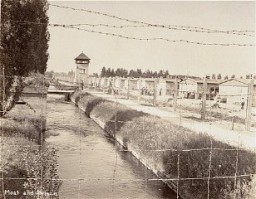
-
Your Kitten is Hungry
SongMordecai Gebirtig, born in 1877 in Krakow, Poland, was a Yiddish folk poet and songwriter. Gebirtig had three daughters, for whom he wrote and performed his poems. The words were set to improvised melodies, and most of his songs resemble entries in a diary. Many of Gebirtig's poems contain themes of eastern European Jewish life in the 1920s and 1930s. The lullaby "Your Kitten is Hungry" dates from the early 1920s. The lyrics, addressed to a hungry child, evoke the themes of hunger and deprivation.
-
American propaganda announcement
DocumentAnnouncement dropped by American planes on Shanghai near the end of the war. [From the USHMM special exhibition Flight and Rescue.]
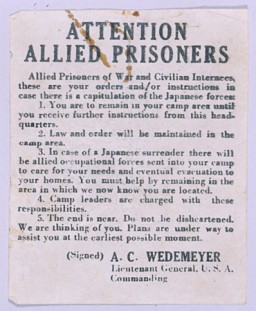
-
On the waiting list for American visas
DocumentThis document from the American Consul-General in Vienna certifies that the Trost family applied for American visas on September 15, 1938. It states that the family (Josef, Alice, Dorrit, and Erika) were placed on the waiting list for visas with the numbers 47291-47294.
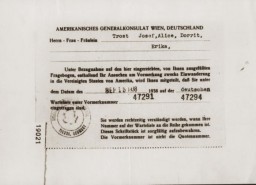
-
Doriane Kurz describes food rations and conditions in Bergen-Belsen
Oral HistoryDoriane's Jewish family fled to Amsterdam in 1940, a year that also saw the German occupation of the Netherlands. Her father perished after deportation to Auschwitz. After their mother was seized, Doriane and her brother hid with gentiles. The three were reunited at Bergen-Belsen, where they were deported via Westerbork. They were liberated during the camp's 1945 evacuation. Doriane's mother died of cancer soon after Doriane helped her recover from typhus. Doriane and her brother immigrated to the United…
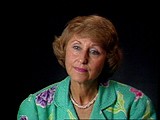
-
Erika Eckstut
ArticleExplore Erika Eckstut's biography and learn about the difficulties and dangers she faced in the Czernowitz ghetto.
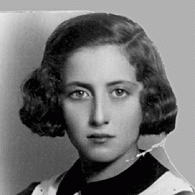
-
A notice sent by the American Consulate General in Berlin regarding immigration visas
DocumentA notice sent by the American Consulate General in Berlin to Arthur Lewy and family, instructing them to report to the consulate on July 26, 1939, with all the required documents, in order to receive their American visas. German Jews attempting to immigrate to the United States in the late 1930s faced overwhelming bureaucratic hurdles. It was difficult to get the necessary papers to leave Germany, and US immigration visas were difficult to obtain. The process could take years.

-
Wöbbelin
ArticleThe US 8th Infantry and the 82nd Airborne Divisions arrived at the Wöbbelin camp in May 1945, witnessing the deplorable living conditions in this subcamp of the Neuengamme concentration camp.

-
Lilly Appelbaum Malnik describes the process of registration in Auschwitz
Oral HistoryGermany invaded Belgium in May 1940. After the Germans seized her mother, sister, and brother, Lilly went into hiding. With the help of friends and family, Lilly hid her Jewish identity for two years. But, in 1944, Lilly was denounced by some Belgians and deported to Auschwitz-Birkenau via the Mechelen camp. After a death march from Auschwitz, Lilly was liberated at Bergen-Belsen by British forces.
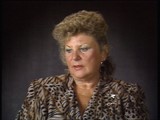
-
Father Charles Coughlin opposes Roosevelt
FilmFather Charles E. Coughlin was a Catholic priest who reached a large audience through mass rallies and radio broadcasts. Coughlin, openly antisemitic, was an outspoken critic of the political establishment. This footage shows him addressing more than 80,000 people, the Illinois members of the National Union for Social Justice, at Riverview Park in Chicago. He criticized President Roosevelt (running for a second term as President of the United States) and attacked the government's fiscal policy in the…

-
Jacob Wiener
ArticleExplore Jacob Wiener’s biography and learn about his experiences during Kristallnacht in Würzburg, Germany.

-
Verdict announced in Medical Case
FilmThe Medical Case was one of twelve war crimes trials held before an American tribunal as part of the Subsequent Nuremberg Proceedings. The trial dealt with doctors and nurses who had participated in the killing of physically and mentally impaired Germans and who had performed medical experiments on people imprisoned in concentration camps. Sixteen of the defendants were found guilty. Of the sixteen, seven were sentenced to death for planning and carrying out experiments on human beings against their will.…

-
Bella Jakubowicz Tovey describes a meeting between her father and the Jewish council leader in Sosnowiec
Oral HistoryBella was the oldest of four children born to a Jewish family in Sosnowiec. Her father owned a knitting factory. After the Germans invaded Poland in 1939, they took over the factory. The family's furniture was given to a German woman. Bella was forced to work in a factory in the Sosnowiec ghetto in 1941. At the end of 1942 the family was deported to the Bedzin ghetto. Bella was deported to the Graeben subcamp of Gross-Rosen in 1943 and to Bergen-Belsen in 1944. She was liberated in April 1945.

-
Norbert Wollheim describes forced labor at the Buna works
Oral HistoryNorbert studied law and was a social worker in Berlin. He worked on the Kindertransport (Children's Transport) program, arranging to send Jewish children from Europe to Great Britain. His parents, who also lived in Berlin, were deported in December 1942. Norbert, his wife, and their child were deported to Auschwitz in March 1943. He was separated from his wife and child, and sent to the Buna works near Auschwitz III (Monowitz) for forced labor. Norbert survived the Auschwitz camp, and was liberated by US…
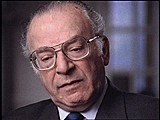
-
Magdalena Kusserow's letter to her sister
DocumentMagdalena Kusserow, incarcerated in a special barracks for Jehovah's Witnesses in the Ravensbrück concentration camp, used stationery provided to prisoners to write a letter to her sister Annemarie in April 1942. The handwritten numbers in the block in the upper right identify Magdalena as prisoner 9591, assigned to block 17a. Magdalena wrote to her sister in part (translated from German): "Dear Annemarie. Received your letter of March 15, did you get mine? I'm fine. How did it go with Wolfgang's 2nd…
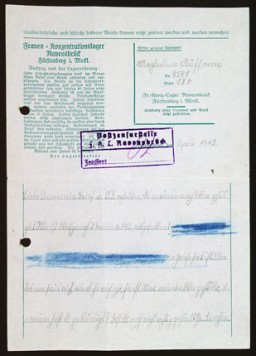
-
Aron (Dereczynski) Derman describes deportations from the Grodno ghetto in November 1942
Oral HistoryAron was born to a middle-class Jewish family in Slonim, a part of Poland between the two world wars. His parents owned a clothing store. After studying in a technical school, Aron worked as a motion-picture projectionist in a small town near Slonim. The Soviet army took over Slonim in September 1939. War broke out between Germany and the Soviet Union in June 1941. Aron returned to Slonim. The Germans soon occupied Slonim, and later forced the Jews into a ghetto. Aron was forced to work in an armaments…
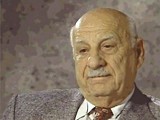
-
Miso (Michael) Vogel describes arrival at Auschwitz
Oral HistoryIn 1939, Slovak fascists took over Topol'cany, where Miso lived. In 1942, Miso was deported to the Slovak-run Novaky camp and then to Auschwitz. At Auschwitz, he was tattooed with the number 65,316, indicating that 65,315 prisoners preceded him in that series of numbering. He was forced to labor in the Buna works and then in the Birkenau "Kanada" detachment, unloading incoming trains. In late 1944, prisoners were transferred to camps in Germany. Miso escaped during a death march from Landsberg and was…
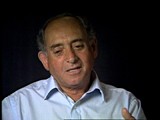
-
Wallace Witkowski describes harsh living conditions for non-Jews in Poland
Oral HistoryWallace and his family were Polish Catholics. His father was a chemical engineer and his mother a teacher. The Germans occupied Kielce in 1939. Wallace witnessed pogroms against Jews in 1942. Wallace was active in the anti-Nazi resistance, acting as a courier between partisan groups. In 1946, in liberated Poland, Wallace witnessed the Kielce pogrom. He was reunited with his father in the United States in 1949; other family members followed. The Communist regime in Poland, however, denied his only sister…

-
Joseph Stanley Wardzala describes forced labor in Hannover
Oral HistoryJoseph and his family were Roman Catholics. After Germany invaded Poland in 1939, roundups of Poles for forced labor in Germany began. Joseph escaped arrest twice but the third time, in 1941, he was deported to a forced-labor camp in Hannover, Germany. For over four years he was forced to work on the construction of concrete air raid shelters. Upon liberation by US forces in 1945, the forced-labor camp was transformed into a displaced persons camp. Joseph stayed there until he got a visa to enter the…
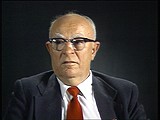
-
Leo Kutner describes forced labor in Stutthof
Oral HistoryLeo was arrested on the first day of the war, and assigned to forced labor in a shipyard, then on a farm. In 1940, like other Jews, he was deported to Stutthof. There, he upholstered furniture for the SS. The following year, he was sent to Auschwitz, where he cleaned the streets and dug ditches. As the Allies neared, Leo was evacuated to a series of camps. On a death march from Flossenbürg, the Nazis dispersed, allowing Leo and other prisoners to get away. He was liberated by US forces in April 1945.
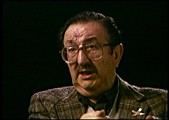
-
Leo Bretholz describes arrival at the Drancy camp
Oral HistoryAfter the Germans annexed Austria in 1938, Leo attempted to flee. He eventually reached Belgium. In 1940 he was deported to the St.-Cyprien camp in France but escaped. In 1942 Leo was smuggled into Switzerland but was arrested and sent back to France, this time to the Rivesaltes and Drancy camps. He and a friend escaped from a train deporting them to Auschwitz in Poland. Leo joined the French underground in 1943. He arrived in the United States in 1947.

-
Beno Helmer describes conditions in the Lodz ghetto
Oral HistoryAs a young man, Beno used his foreign language skills to land small movie roles. He and his family were deported to the Lodz ghetto, where they struggled daily to find food. In the underground, Beno became an expert at derailing trains. The family was sent to Auschwitz and was separated. All but Beno and one sister, whom he found after the war, died. Beno survived a series of camps and later helped to track war criminals.
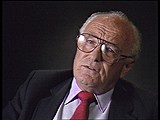
-
An Overview of the Holocaust: Topics to Teach
ArticleRecommended resources, topics, context, rationale, and critical thinking questions if you have limited time to teach about the Holocaust.

-
Hetty d'Ancona Deleeuwe describes difficulties of going into hiding
Oral HistoryThe Germans invaded the Netherlands in May 1940. After a year or so, Hetty and other Jewish children could no longer attend regular schools. The Germans took over her father's business in 1942. Hetty's father tried to prove that the family was Sephardic, and they were thus exempted from a roundup in 1943. Hetty's father decided that the family should leave Amsterdam, and Hetty was hidden with a family in the southern Netherlands. She and both her parents survived.

-
Riga
ArticleGerman forces occupied Riga, Latvia in July 1941. Learn more about the establishment of the Riga ghetto, mass shootings of Jews, and Jewish resistance.

-
Frank Liebermann
ArticleExplore Frank Liebermann’s biography and learn about his experiences of antisemitism in his home town in Germany before World War II.
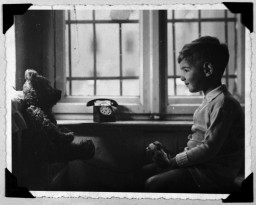
-
Albert Speer sworn in at Nuremberg
FilmDefendant Albert Speer is sworn in at the International Military Tribunal.
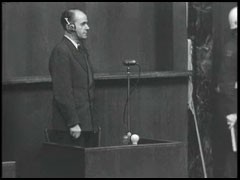
-
Storm Troopers stand guard outside a defaced Jewish-owned business
PhotoShortly after the German annexation of Austria, Nazi Storm Troopers stand guard outside a Jewish-owned business. Graffiti painted on the window states: "You Jewish pig may your hands rot off!" Vienna, Austria, March 1938.
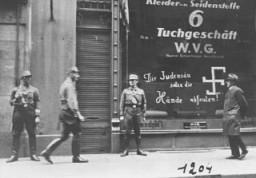
-
Ernst Toller
ArticleErnst Toller was one of the best-known German dramatists of the 1920s. He wrote against Nazism, and was among those whose works were burned under the Nazi regime.
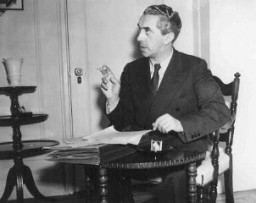
-
The White Rose Opposition Movement
ArticleThe White Rose, led by students including Hans and Sophie Scholl, was an anti-Nazi group during WWII. Its members spread leaflets denouncing the regime.
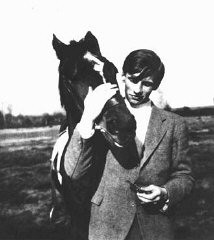
-
Alfred Kerr
ArticleGerman Jewish writer Alfred Kerr was a well known theater critic during the Weimar period. His works were burned during the Nazi book burnings of 1933.
-
Kurt Tucholsky
ArticleKurt Tucholsky was a German satirist who criticized the Nazis during their rise to power. In 1933, his works were burned under the Nazi regime. Learn more.
-
Life After the Holocaust: Aron and Lisa Derman
ArticleAfter WWII and the fall of the Nazi regime, Holocaust survivors faced the daunting task of rebuilding their lives. Listen to Aron and Lisa Derman's story.
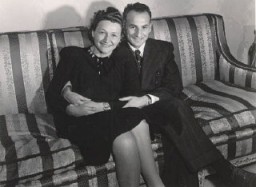
-
Poster promoting the Nazi monthly publication Neues Volk
PhotoPoster promoting the Nazi monthly publication Neues Volk. Jews were not the only group excluded from the vision of the "national community." The Nazi regime also singled out people with intellectual and physical disabilities. In this poster, the caption reads: "This hereditarily ill person will cost our national community 60,000 Reichmarks over the course of his lifetime. Citizen, this is your money." This publication, put out by the Nazi Party's Race Office, emphasized the burden placed on society by…
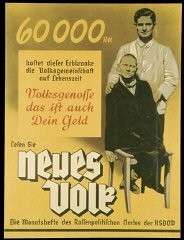
-
Leon Senders
ArticleRead the Jewish Partisan Educational Foundation's short biography of Leon Senders.
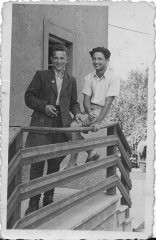
-
Letter from Esther Lurie regarding lost art, 1945
DocumentThis document is one page of a letter from artist Esther Lurie, written after the war, asking for help in following down leads and locating the artwork she had created and hidden while imprisoned in the Kovno ghetto, Lithuania. She wrote, "The matter concerns a collection of 200 pen-and-ink drawings representing scenes of ghetto life which I made during my internment in the Kaunas Ghetto (Lithuania) in 1941-1944. I left the drawings buried in the earth as I felt that I had no hope of survival."
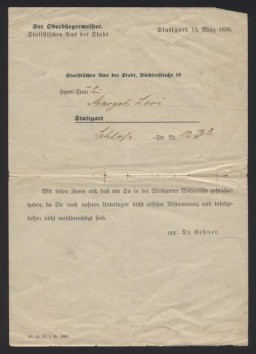
-
Leah Hammerstein Silverstein describes working under a false non-Jewish identity in a German hospital in Krakow
Oral HistoryLeah grew up in Praga, a suburb of Warsaw, Poland. She was active in the Ha-Shomer ha-Tsa'ir Zionist youth movement. Germany invaded Poland in September 1939. Jews were forced to live in the Warsaw ghetto, which the Germans sealed off in November 1940. In the ghetto, Leah lived with a group of Ha-Shomer ha-Tsa'ir members. In September 1941, she and other members of the youth group escaped from the ghetto to a Ha-Shomer ha-Tsa'ir farm in Zarki, near Czestochowa, Poland. In May 1942, Leah became a courier…

-
Barbara Ledermann Rodbell describes receiving her first set of false papers
Oral HistoryIn 1933 Barbara's family moved to Amsterdam, in the Netherlands. They became friends of Anne Frank and her family. The Germans invaded the Netherlands in 1940. Barbara's boyfriend, Manfred, had underground contacts and she got false papers. Her mother, sister, and father were deported to Westerbork and then to Auschwitz. Barbara survived using her false papers and worked for the resistance. She helped take Jews to hiding places and also hid Jews in an apartment held in her false name.
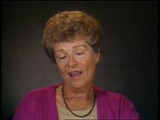
-
William (Bill) Lowenberg describes the importance of bonds of friendship among young people imprisoned in the Westerbork camp
Oral HistoryAs a boy, Bill attended school in Burgsteinfurt, a German town near the Dutch border. After the Nazis came to power in Germany in January 1933, Bill experienced increasing antisemitism and was once attacked on his way to Hebrew school by a boy who threw a knife at him. In 1936, he and his family left Germany for the Netherlands, where they had relatives and thought they would be safe. However, after Germany invaded the Netherlands in May 1940, antisemitic legislation--including the order to wear the Jewish…
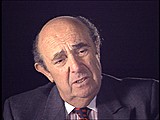
-
Lily Mazur Margules describes the dehumanization she felt in the Kaiserwald camp
Oral HistoryLily was forced into a ghetto after the Germans occupied Vilna in 1941. She was forced to work until the liquidation of the ghetto in 1943 when she was deported to the Kaiserwald camp near Riga, Latvia. From there she was sent to work in the Duenawerke labor camp. She was deported by ship across the Baltic Sea to the Stutthof camp and was taken to a nearby labor camp. Lily was liberated during a death march which ended in the town of Krumau, East Prussia, in 1945.
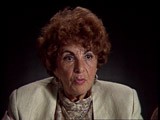
-
Leo Melamed describes life as a refugee
Oral HistoryLeo was seven years old when Germany invaded Poland in September 1939. Before the war, Leo's father was a mathematics teacher and member of the Bialystok City Council. Fearing arrest, Leo's father fled Bialystok for Vilna just before the German occupation. Leo and his mother eventually joined his father in Vilna. After the Soviets occupied Vilna, Leo's father obtained transit visas to Japan. The family left Vilna in December 1940, traveled across the Soviet Union on the Trans-Siberian Express, and arrived…
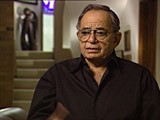
-
Preben Munch-Nielsen describes the Danish people's responsibility to help their Jewish fellow citizens
Oral HistoryPreben was born to a Protestant family in Snekkersten, a small fishing village. The Germans invaded Denmark in 1940. Preben became a courier in the resistance. When the Gestapo (German Secret State Police) began hunting down Jews in Denmark in October 1943, Preben helped hide refugees in houses near the shore and led them to boats which took them to Sweden. Preben himself had to take refuge in Sweden in November 1943. He returned to Denmark in May 1945.

-
Bella Jakubowicz Tovey describes conditions in Bergen-Belsen
Oral HistoryBella was the oldest of four children born to a Jewish family in Sosnowiec. Her father owned a knitting factory. After the Germans invaded Poland in 1939, they took over the factory. The family's furniture was given to a German woman. Bella was forced to work in a factory in the Sosnowiec ghetto in 1941. At the end of 1942 the family was deported to the Bedzin ghetto. Bella was deported to the Graeben subcamp of Gross-Rosen in 1943 and to Bergen-Belsen in 1944. She was liberated in April 1945, and…
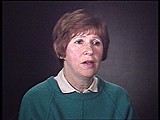
-
Franz Wohlfahrt describes imprisonment in Graz
Oral HistoryFranz and his family were Jehovah's Witnesses. Germany annexed Austria in 1938. After World War II began, Franz's father was executed because, as a Witness, he opposed war. In 1940, Franz refused to participate in military training and would not salute the Nazi flag. He was imprisoned, interrogated by the Gestapo (German Secret State Police) in Graz, and sentenced to five years of hard labor in a camp in Germany. Franz was liberated by US forces in 1945.
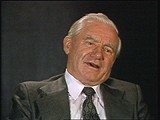
-
Beifeld album page titled "Mementos"
ArtifactCollage entitled: "Mementos from the Russian campaign," which includes a watercolor of Stalin with the caption: 'Russia a meeting place for foreigners 1942-43' (top); a commuter train ticket issued to military personnel who carried the special SAS [Hurry, Immediate, Urgent] draft notice (middle, right); a pseudo travel brochure cover entitled 'Spend your summer vacation in merry Russia' (bottom, left); and the original design for the cover of the labor company's journal entitled 'Hungarian Royal 109/13…
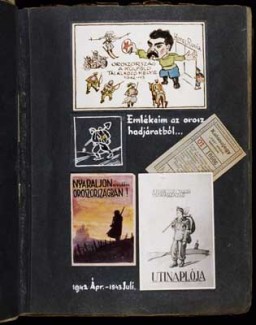
-
On the waiting list for American visas
DocumentSelmar and Elsa Biener joined the waiting list for US immigration visas in September 1938. Their waiting list numbers—45,685 and 45,686—indicate the number of people who had registered with the US consulate in Berlin. By September 1938, approximately 220,000 people throughout Germany, mostly Jews, were on the waiting list.
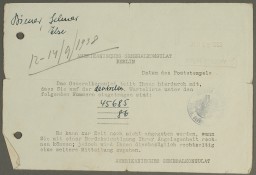
-
Leah Johnson
ArticleRead the Jewish Partisan Educational Foundation's short biography of Leah Johnson.
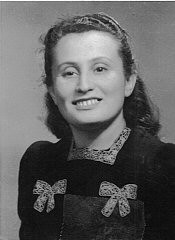
-
Abba Kovner
ArticleRead the Jewish Partisan Educational Foundation's short biography of Abba Kovner.
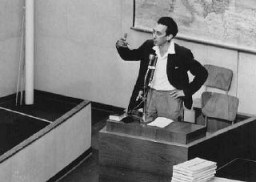
-
Saul Ingber describes forced labor and brutality in the Gusen subcamp of the Mauthausen concentration camp
Oral HistorySaul grew up in a religious Jewish family. He was trained as a tailor. In 1939 he was sent to forced labor along with most of the young men of his town. He worked in many different labor camps before being deported to the Mauthausen concentration camp system in 1944. While working there, Saul's hand was broken by an SS guard. He eventually ended up in the hospital in the Dachau camp. He was liberated by US troops in May 1945. After the war he returned to his hometown and was reunited with his sister. They…

